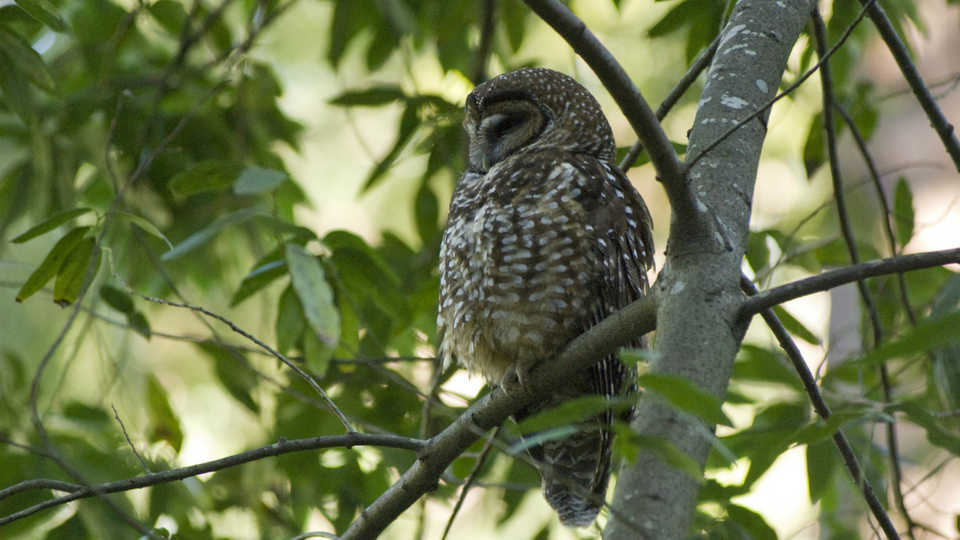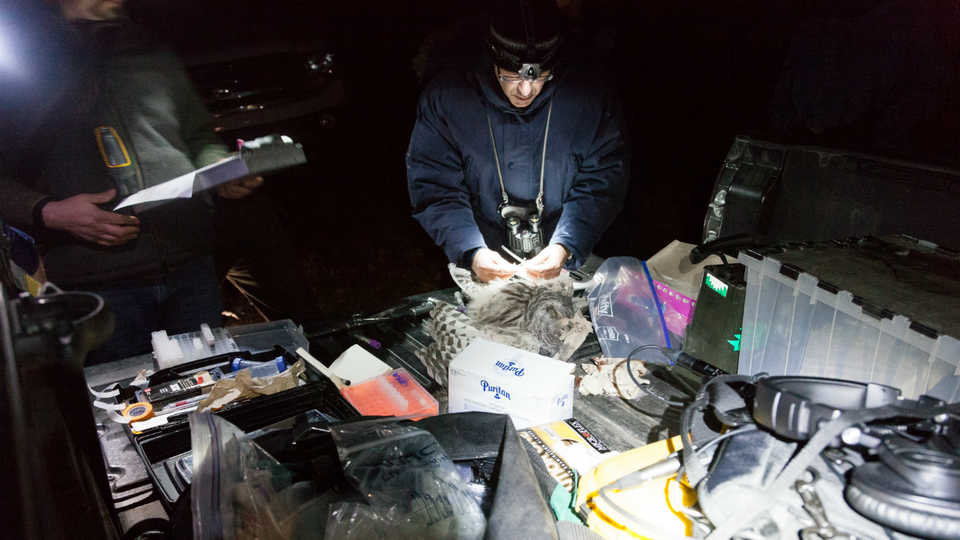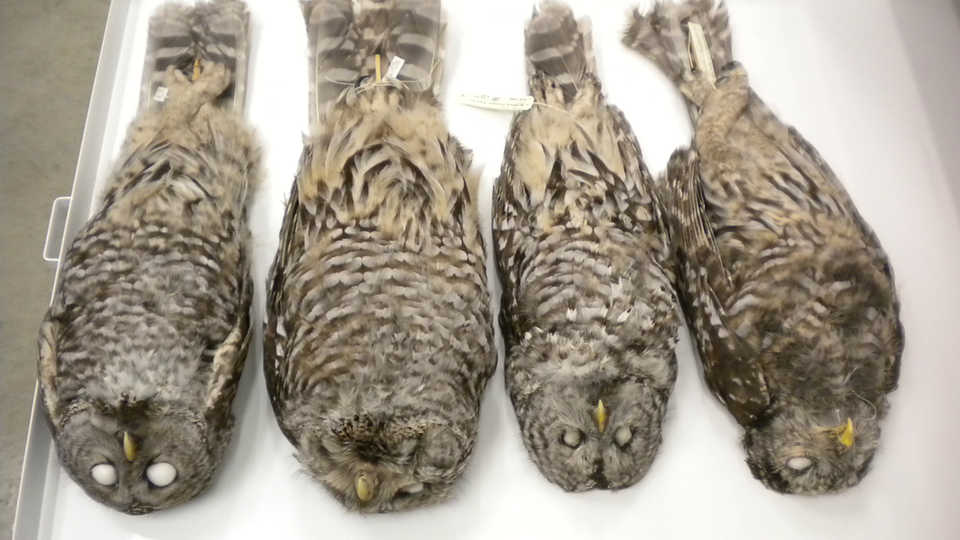Addressing Owl Conservation
To the casual observer out on a forest trail, the differences between the northern spotted owl (Strix occidentalis) and the barred owl (Strix varia) may seem small: Spotted owls are a little smaller and have a smattering of white spots against a brown chest, while barred owls have bolder vertical brown markings against a white chest. Their songs are also slight variations of the same basic elements. Spotted owls blurt out two or three short hoots followed by a longer, drawn out hooooo, while barred owls ask, “Who cooks for you?”
But to somebody like the Academy’s Jack Dumbacher, Associate Curator of Ornithology and Mammalogy, these two closely related birds—one a native endangered species and the other its more aggressive, invasive relative—represent the two major players behind some challenging questions around the way we manage species and their habitats.
A Westward Migration
Historically, the barred owl was solely the “eastern cousin” to the northern spotted owl, sticking to the forests east of the Great Plains. Having somewhat mysteriously made the migration westward, barred owls began their “formal” invasion of the forest territory of the spotted owls in 1959. This occurred first in British Columbia, then expanded into Washington and Oregon around 1970, finally reaching California by the mid-1970s. The first sighting of the barred owl in Marin County came in 2003. During the same period, northern spotted owl populations were declining rapidly, and the species was formally listed as endangered in 1990. Biologists cited old-growth habitat loss as the bird’s primary threat, but another pattern was emerging: it seemed that over time, the number of spotted owls was becoming inversely proportional to that of barred owls.
Scientists were “alarmed by rapidly declining spotted owl populations, and suspected that they were being edged out—and possibly hybridizing with—more aggressive barred owls showing up outside of their traditional range,” says Dumbacher. “With the clock ticking for endangered spotted owls, we needed to study these interactions to properly guide species survival plans.” By sharing the same habitat, the two species inevitably compete for food and nesting sites, and when that happens, the more aggressive (and less picky) barred owls are almost always the victors. Doing nothing in response would likely allow barred owls to completely displace spotted owls, spelling extinction for the native species.
The Role of Conservation Biology
Coming up with a plan to deal with this issue is particularly challenging because there are so many complex questions involved. It has also revived and shaken up longstanding disagreements between environmentalists, government agencies, and scientists on how to handle invasive species issues. One of the goals of conservation biologists is “to create a healthy environment where species can continue to evolve and do naturally what species will do,” says Dumbacher. But is this westward expansion of barred owls natural? Or has it been aided by human interference?
At the Academy, Dumbacher leads a team studying the relationship between the two owls by generating entire genome sequences and identifying possible signs of crossbreeding, or hybridization, between the two species. With this information, they can better understand the threats posed by barred owls and help partners in the field develop management practices for protecting the endangered species.
Lowell Diller is a staff biologist with the Green Diamond Resource Co., a timber company in northwestern California, who has become an unlikely conservation partner to the Academy. For years, he has collected data on spotted owl and barred owl populations on the company’s privately owned forest property. This made it an ideal location for collecting barred owls, and perfect for Dumbacher’s plan to monitor if and how their removal would directly affect the northern spotted owls. Sure enough, after barred owls were removed for research, Diller began to see the return of spotted owls almost immediately. “This was valuable early evidence that S. occidentalis was being outcompeted, and research specimens opened a treasure trove of information about how these birds were changing in real-time,” says Dumbacher.
Further Dangers
While the barred owl’s presence is a threat to the survival of the northern spotted owl, there looms another danger in northern California forests, one with the potential to impact the entire region’s forest ecosystem. Increasingly, illegal marijuana growers in the Pacific Northwest protect their crops from rodents using pesticides. These poisons are ingested by owls and other predators, including fishers and northern goshawks, when they consume rodents with non-lethal doses of the chemicals in their systems. Over time, the poisons can cause illness and death in their unintended victims. To assess the impact of this threat, Dumbacher and his team analyzes liver tissue taken from each barred owl that enters the Academy’s collection. Monitoring the toxin level in this apex predator will help Academy scientists understand the health of the entire forest, and, in time, support and inform a forest monitoring plan to protect the most vulnerable species before it’s too late.


